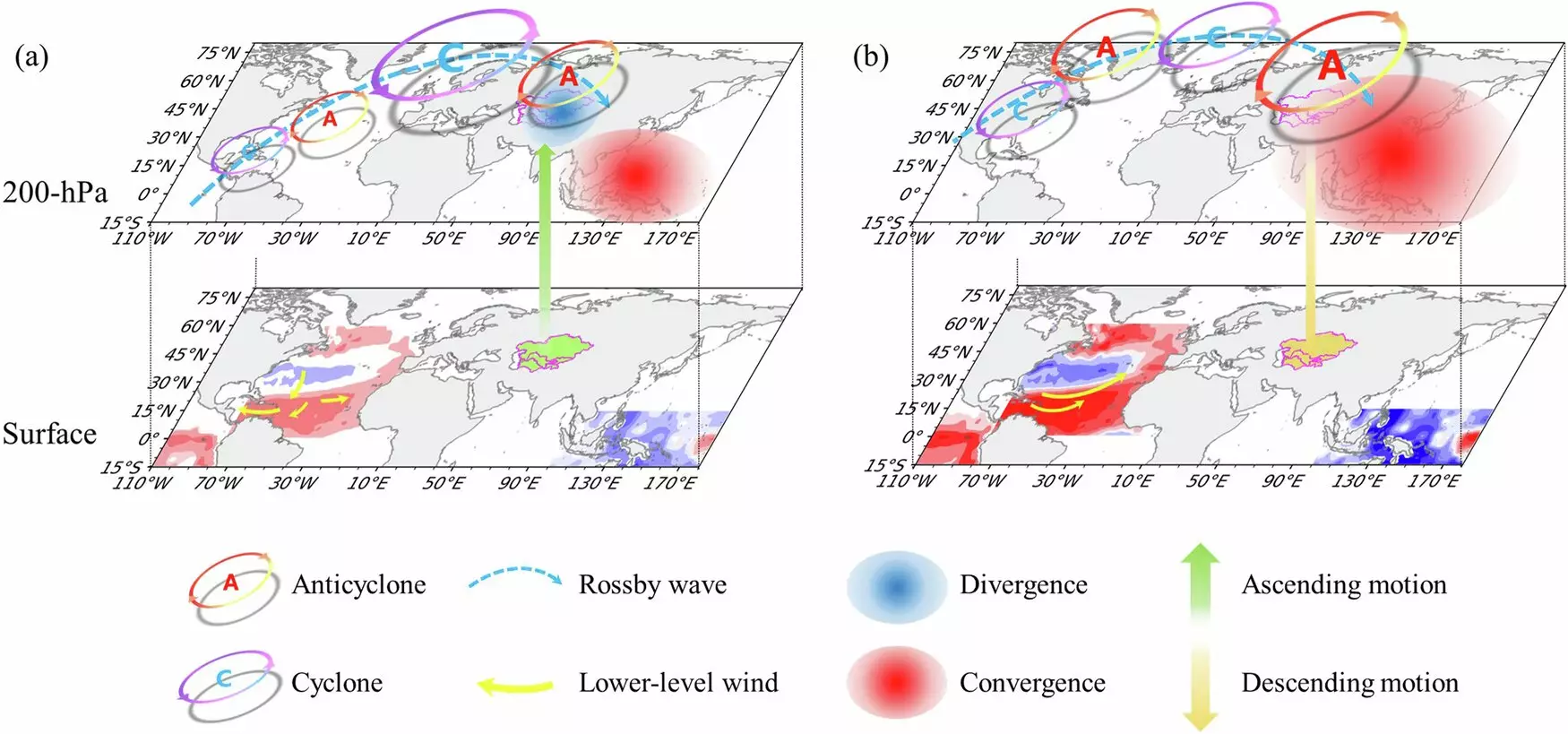Central Asia, comprising Kazakhstan, Uzbekistan, Turkmenistan, Kyrgyzstan, and Tajikistan, is a vast territory characterized by its semi-arid to arid climate. This region’s landforms and geographical diversity endow it with a unique continental climate that makes it especially vulnerable to variations in precipitation patterns. The climate is predominantly continental, which leads to extreme seasonal temperature variations and irregular rainfall distribution. Water resources in Central Asia are critical for agriculture, a primary economic activity in the region, and any shifts in precipitation have tangible impacts on the ecosystem and livelihoods of the inhabitants.
Spring serves as the vital rainy season for agriculture, particularly in southern Central Asia, where crops rely heavily on the rainfall during this period. Variability in spring precipitation has a cascading effect on water resources, which in turn affects agricultural output, economic stability, and biodiversity. Understanding the factors contributing to this variability is paramount to securing water resources and improving agricultural resilience in the face of climate change.
A key influencing factor on precipitation in Central Asia is the El Niño–Southern Oscillation (ENSO). This climate phenomenon affects global weather patterns and has been shown to impact rainfall in Central Asia significantly. Traditionally, researchers have linked an El Niño event in winter to an increase in precipitation during the subsequent spring, primarily because it enhances moisture transport to the region and facilitates atmospheric interactions that stimulate rainfall.
However, emerging research has indicated that this relationship fluctuates over time. A study published in *npj Climate and Atmospheric Science* highlights how the correlation between ENSO and spring precipitation in Central Asia has changed throughout the decades. Notably, there was a marked weakening of this relationship in the 1930s, which gradually reversed until a notable strengthening was observed once again in the 2000s. This complexity calls for a nuanced understanding of the climatic processes at play.
Key Factors that Influence Precipitation Relationships
Two primary factors elucidate the interdecadal variability of the ENSO-spring precipitation relationship. The first revolves around the meridional pathway—essentially, how sea surface temperature fluctuations in the Pacific influence moisture dynamics over Central Asia. During strong El Niño events, atmospheric dynamics create significant vertical motion, leading to increased precipitation. Conversely, when the influence of ENSO is diluted, these dynamics become less pronounced, resulting in variable rainfall patterns.
The second factor relates to sea surface temperature anomalies in the North Atlantic, which can disrupt the typical relationship between ENSO and precipitation. Specifically, springtime temperature anomalies—cold in the middle North Atlantic and warm in the subpolar regions—affect how El Niño’s moisture inputs translate to rainfall in Central Asia. During periods marked by weak correlations, these sea surface patterns can diminish the wetting influence typical of El Niño events.
Moreover, the role of wind patterns in the North Atlantic is instrumental in this disruption. The nature and duration of ENSO events impact these wind patterns, which then influence sea surface temperature distributions important for precipitation variability.
The intricate relationship between ENSO and Central Asian spring precipitation not only provokes academic interest but also holds practical implications for climate prediction models. As observed, a strengthening trend in this relationship has emerged since the 2000s, which could enhance the reliability of predicting spring precipitation outcomes in a region grappling with increasingly erratic climate conditions.
Prof. Huang Gang, the lead researcher of the study, suggests that understanding these complex interactions can inform regional stakeholders and improve seasonal forecasting. Better predictions could potentially lead to more resilient agricultural practices and improved water management strategies in Central Asia, which is crucial for sustainability in this arid region.
As climate dynamics evolve, so too must our understanding of the relationships that govern weather patterns such as those presented by ENSO. Continuous research is vital to unraveling these complexities and developing effective responses to ensure the resilience of Central Asia’s agriculture and ecosystems in the face of ongoing climate change.


Leave a Reply